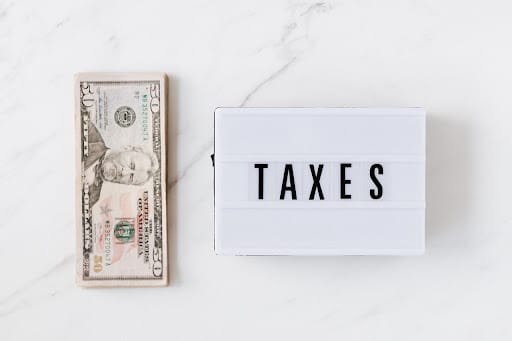
How to Set Up a Business as a Freelance Hairstylist

Hairstylists have the rare opportunity to work on something they are passionate about every day. They can become a freelance hairstylist to try something new.
When it comes to working as a hairstylist, being in a salon all day may not cut it for everyone. Maybe it’s working the same hours every day or having to pay extra fees to the salon that has you feeling stuck. You may even have a large and loyal client base that would get a haircut from you anywhere.
If this is the case, then it’s time to look into becoming a full-time freelance hairstylist (or part-time, cause hey, you’re your own boss!).
Being on your own may seem like a big step, but at some point, you can actually get out of the salon and create a successful business for yourself.
If you’re thinking about striking out on your own, here is everything you need to know to set up a business as a freelance hairstylist.
Learn how to start a freelance business in your field:
Freelance Mechanic | Freelance Electrician | Freelance Engineer | Freelance Accountant | Freelance Barber | Freelance Software Developer | Freelance Content Strategist | Freelance Physical Therapist | Freelance Bartender | Freelance Chef | Freelance Medical Assistant | Freelance CycleBar Instructor | Freelance CrossFit Coach | Freelance Content Writer | Freelance Piano Tutor | Freelance Waxing | Freelance Audio Editor | Freelance Data Analyst | Freelance Photographer | Freelance Tutor | Freelance Videographer | Freelance Welder | Freelance Teacher | Freelance Video Editor | Freelance Real Estate Agent | Freelance UX Designer | Freelance Copy Editor | Freelance Administrative Assistant | Freelance Social Media Manager | Freelance Carpenter | Freelance DJ | Freelance Illustrator | Freelance Copywriter | Freelance Personal Trainer | Freelance Grant Writer
What Does it Mean to be a Freelance Hairstylist?
The main difference between a salon stylist and a freelance hairstylist is that freelancers work for themselves. You can do whatever you like as a stylist (hair color, hair braiding, hair extensions, etc.) without getting direction from a salon or boss.
After years of experience in a salon setting, you may really love working by yourself. However, you can also work with other freelancers if you’d like. You may build your business up to a point where you hire your own employees.
Most commonly, though, freelancers work on their own.
Being a Freelance Hairstylist vs. Working in a Salon
One of the biggest differences between working at a salon and working for yourself is who is in charge. As a freelancer, you will be in charge of everything.
You will need to get your own supplies, book your own clients, and keep track of your scheduling and payments. In a salon setting, other employees usually tackle many of these tasks.
Another way to freelance as a hairstylist is to keep working with salons. You can rent out chairs or studios at different establishments and bring in your client base.
Just because you’re a freelancer doesn’t mean you have to completely ditch the salon setting if that’s something you enjoy.
Now that you know some of the key factors of being a freelance hairstylist, you should be ready to set up your business.
How to Set Up Your Freelance Hairstylist Business
When you decide to go freelance, you are taking your passion for hair care and hoping to turn it into a profitable small business. This won’t always be an easy task, but if you have an entrepreneurial spirit and drive, you’ll be ready to dive right in.
Various Freelance Hairstylist Setups
Maybe besides hair care, you’d like to offer up your other cosmetologist skills, too. If you’re a skilled makeup artist, you can offer airbrush makeup or skincare treatments alongside blowouts, braids, and updos!
Here are some ways that you can think about setting up your business as a freelance makeup artist/hairstylist.
Go to Your Clients
Since most independent hair stylists don’t have a brick-and-mortar shop, they’ll travel to their clients. You can easily do house visits when you decide to be a mobile freelancer.
You’ll have to make sure that you have a portable set up for your equipment. You will also have to keep gas and travel costs in mind when going mobile. This is a great setup to try if you are looking for a completely flexible schedule.
You can market yourself to clients who need someone to come and provide hairstyles for photoshoots onsite.
This is also a popular option amongst brides not wanting to travel on their big days. Go to their venue the day of to lend your hairdresser skills to the bridesmaids (after you’ve finished the bridal hair, that is!).
Go Completely Mobile
Another popular option for freelance hairstylists is to open a mobile hair station. You can have a mobile hair salon that actually drives around and goes to clients. Or you can set up a stationary salon in a designated parking area.
The second option may make it easier to hook up to electricity and water. Going for a stationary mobile unit also allows you a concrete location without paying rent somewhere else.
Subscribe To SelfGood
Get up to date perks and Gigworker news. Easy. Simply. SelfGood. Subscribe.
The Logistics of Starting a Freelance Business
Now that you know about the different types of freelance hairstylists you can be, it’s time to set up your business.
Register Your Business
When you set up a freelance business, you will have to register your business. The most popular way for freelancers to register is as an LLC.
Get an EIN
Once you register your business, you will get an EIN. This is an Employer Identification Number, and you will use this as an identifier when you file taxes for your business.
Liability Insurance
As a freelance worker, you have to make sure you are taking care of yourself as well as your business. This is why it’s crucial to obtain liability insurance in addition to registering your business.
Liability insurance will protect you if there are any issues with clients. It will also cover equipment or operating costs if something happens to your business.
Benefits
As you set up your business, don’t forget about looking into benefits for yourself. You should still get the best benefits, even once you’re self-employed.
Gig workers and freelancers can easily enroll in Selfgood for health, wellness, finance, and even legal benefits.
Licenses
As a hairstylist, you likely already have a cosmetology license. But if you are looking into setting out on your own as a hairdresser, you must obtain a cosmetology license to practice with clients. Once you have your license, you can do hair at a salon or freelance.
If you have mad makeup skills too, double up and go for your makeup artist license at the same time.
Who knows?
Once you’re a licensed freelance makeup artist, you might even pursue fun job types like theatrical and performance makeup in NYC or work with a special effects crew out in Los Angeles!
If you are looking into mobile hairstylist options, you may have to get additional permits.
Additional Permits
Permits for mobile salons vary from state to state, and some may have fees as well. Be sure to look into the different requirements in your state to ensure you are all set to style hair in a mobile setting.
Now that you have your small business set up, you’ll have to make sure you keep track of your finances and taxes.
How to Keep Track of Taxes as a Freelance Hairstylist

When you become an independent hairstylist, there are certain taxes that you will have to pay that may be different from your usual taxes.
Freelancer Taxes
Independent hairstylists have to pay income tax as well as self-employment tax. The self-employment tax is 15.3% of your net earnings when you work freelance.
How to Keep Track of Your Taxes as a Freelancer
While this number isn’t much higher than what you may have paid as an employee, you have to take care of it yourself as a business owner. Make sure that you are always keeping track of your earnings.
To keep track of the taxes you owe, you can set them aside in a savings account throughout the year.
You can also set up an account with EFTPS, a tax payment service. This service allows you to make small payments throughout the year rather than paying a large chunk of change during tax season.
Tax Deductions as a Freelance Hairstylist
As a freelance hairstylist, you may be eligible for certain tax deductions. Freelancers can get deductions on equipment, start-up costs, and vehicle expenses, to name a few.
Be sure to take advantage of tax deductions when filling out your personal tax return. Running a small business can rack up a lot of bills. So make sure to get money back where you can.
How to Get Freelance Hair Stylist Jobs
You’ll have to market your business to get work. Freelancers can thrive if they can sell their business well.
Here are some ways that you can start marketing your freelance hairstyling business.
Social Media Marketing
One of the best parts about working as a stylist is making your clients look good. So be sure to take photos of the styles that you work on. You can use these photos to create an attractive social media presence.
Try to create a cohesive brand across your social media platforms. Then use the photos of your work to draw people in.
People can easily send posts to their friends on social media — meaning referrals for you! This way, you can get the word out that you are taking clients. And your new clients will already know what kind of work you do.
Most of the time, social media marketing is low-cost or even free.
Digital Advertising
To expand your reach on social media, you can also do some digital advertising. Digital advertising doesn’t have to be expensive. It can be as simple as boosting a post on your Instagram.
With a digital advertising campaign, you can easily target specific people that you would like as potential clients. Digital advertising is a great way to get the word out about your business in your local area.
Pros of Becoming a Freelance Hairstylist

Becoming a freelance hairstylist is an excellent decision for many people. There are tons of benefits that come with running your own business.
Flexibility
You have complete control over your schedule and client base when you run your own business. This allows you to have flexibility in your everyday life that you may not have had before. This is undeniably one of the most significant pros to going freelance.
Keeping Your Money
As your business grows, you will get 100% of the profits that you make. When working in a salon, you may have had to give a portion of your earnings to the salon. But when you work alone, you get to keep everything.
You also have the opportunity to increase your profits as you grow your business and client list.
Make Your Own Decisions
As a freelancer, you get to be your own boss. You get to decide what kind of styles you’d like to do, when you would like to work, and how many clients you want to work with.
You can truly take your business to great places without answering to other people.
Cons of Being a Freelance Hairstylist
There’s really just one downside to this whole venture:
Keeping Track of Everything
Working alone isn’t for everyone, and some people may not realize how many different hats you have to wear as a freelancer.
Your main job is styling hair. But you also have to keep track of schedules and finances. You have to make sure that you can keep track of all your administrative work to ensure your business runs smoothly.
Being a freelancer isn’t always smooth sailing, but it’s a great way to break out of the confines of working for someone else.
Conclusion
Becoming a freelancer allows stylists to step out of the salon and spread their wings.
As a freelance hairstylist, you have total control over the types of styles you want to work on. You don’t have to worry about the costs of keeping up a salon, and you can make your business completely unique.
There are so many possibilities to grow when you create your own hairstylist business. Whether you’re driving around the city in a mobile salon or seeing clients in their homes, your business can expand and thrive.
Just follow these tips to keep the business side in place and have more time to enjoy what you’re best at — doing hair.
As a freelance hairstylist, make sure that you take care of yourself by checking out the benefit packages Selfgood has to offer. When you don’t have an employer offering you benefits, you can still keep yourself covered with Selfgood.





